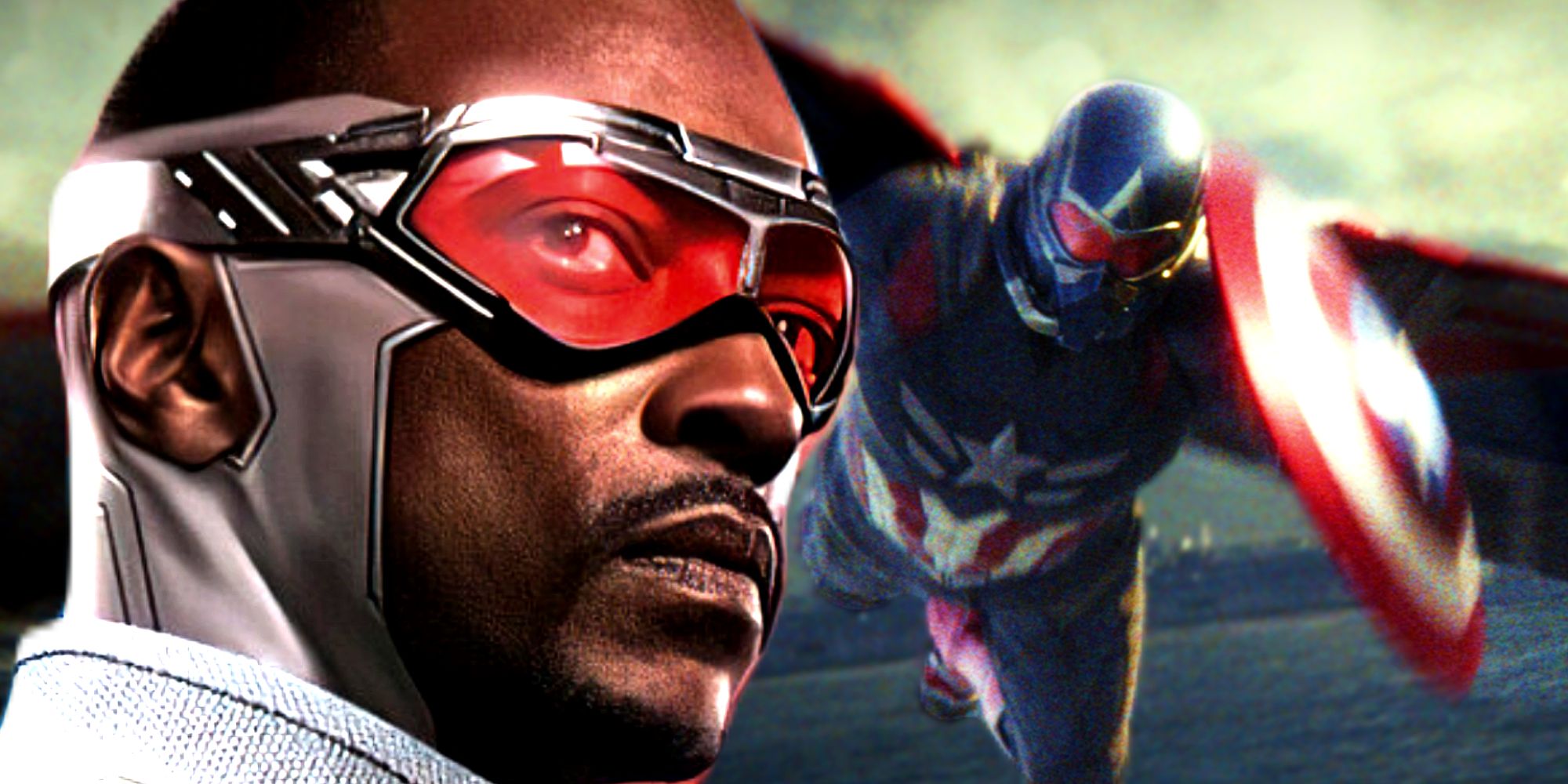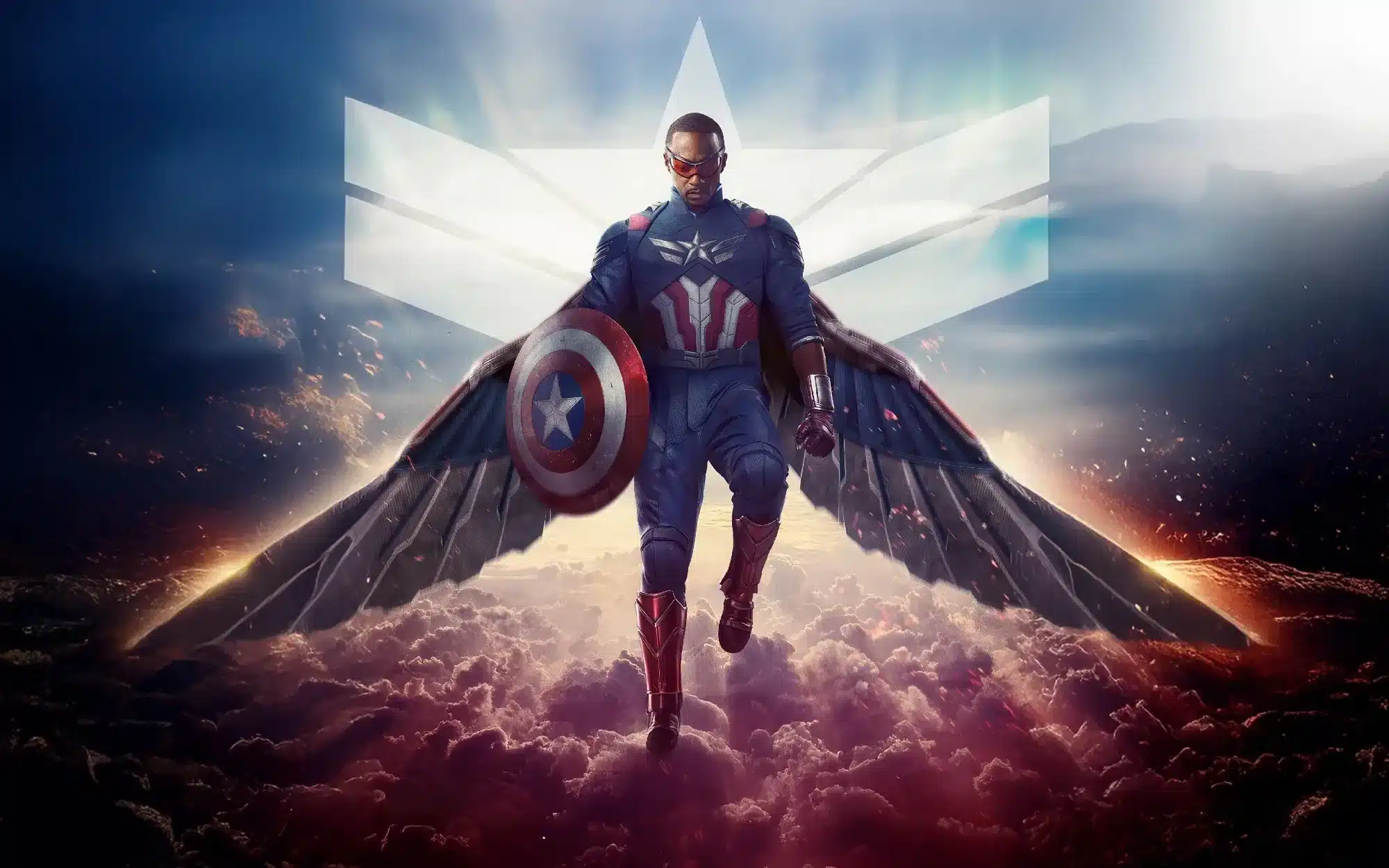Table of Contents
First Marvel Movie in Months
“Captain America: Brave New World” arrives on the big screen as the first Marvel release in six months, rekindling excitement that has been on pause for a while. It lands in theaters at a moment when fans have eagerly awaited something fresh from the superhero realm, especially with so many other film franchises popping up. The extended gap between Marvel installments has led some to speculate about the future of comic-book adventures. Nonetheless, this new entry aims to remind audiences of the continuing influence the Marvel Cinematic Universe (MCU) holds. By showcasing its trademark blend of action, character growth, and epic storytelling, “Brave New World” signals Marvel’s intention to keep forging ahead.
This film is also unique because it is the first since 2022 to center on a “Marvel Classic” hero, following that year’s blockbuster hits “Thor: Love and Thunder” and “Black Panther: Wakanda Forever.” Those two cinematic chapters both carried the stamp of iconic Marvel characters, but “Brave New World” returns the spotlight specifically to the Captain America lineage. Audiences who love the longstanding icons of the MCU will likely be intrigued by this thematic pivot, since the movie takes viewers back to the essence of that old-school Marvel spirit. With a name like Captain America behind it, the film aims to capture the nostalgic draw of one of Marvel’s most recognizable heroes.
Erosion of the Thrill
Over the past three years, numerous observers have begun to question whether the high-octane momentum surrounding comic-book films has subsided. After repeated installments and crossovers, some viewers find themselves grappling with concerns about franchise fatigue. That creeping doubt about whether the thrill is fading casts a shadow over superhero movies in general. Marvel, which previously soared on a wave of near-universal excitement, might have felt the pinch of skepticism. The universal question — whether audiences are still as captivated by the continuing saga of superpowered figures — has lingered, especially for the next big step in the Captain America storyline.

Despite these worries, the enormous success of last summer’s “Deadpool & Wolverine,” which raked in $636 million domestically, sparked a renewed sense of confidence. The film’s triumph at the box office seemed to assure studio heads that interest in comic-book adventures had not fizzled out entirely. The figures for that film demonstrated that even when some critics or fans suggest superhero fatigue, a sizable portion of the audience remains enthusiastic. Marvel, ever alert to shifts in public taste, might be buoyed by that box-office momentum. After all, a robust financial return on a major comic-book movie signals that mainstream viewers still believe in the genre’s ability to entertain.
Growing Repetition
Nonetheless, the MCU’s extensive filmography now spans 35 feature length entries, which is an impressive feat but also means that a particular level of repetition has inevitably seeped in. This vast tapestry of interwoven story arcs, shared characters, and familiar tropes can sometimes leave even devoted fans feeling that they have witnessed it all before. From brand-new villains who bear a resemblance to old ones to repeated ensemble showdowns that begin to feel formulaic, the ever-expanding Marvel timeline poses narrative challenges. Each additional film has to justify its own existence and prove that it can bring fresh energy to a universe where established patterns seem tough to break.
The specter of “superhero fatigue” looms more prominently now over a Captain America production than it did in the earlier phases of the MCU. In the franchise’s formative years, novelty was one of its greatest strengths — every new film introduced a different corner of the comic universe, and the interconnectivity felt revolutionary. Today, the sense of wonder can sometimes be harder to maintain. This is not to say that the audience has checked out entirely; however, with each new Marvel chapter, the stakes grow higher for capturing attention in a crowded blockbuster environment. Thus, “Brave New World” shoulders the task of reassuring fans that Captain America, as a brand, can remain thrilling and relevant.
A Dense Backstory
Adding further complexity to viewer expectations is the extensive backstory woven through multiple Marvel projects, including the Disney+ miniseries “The Falcon and the Winter Soldier” (2021). That series set up pivotal plot points for Sam Wilson, establishing his evolving identity in the post-Steve Rogers era. Consequently, “Brave New World” may leave some audiences wondering if they have done enough homework to fully appreciate every detail. The filmmakers must balance the goal of pushing the story forward while also acknowledging the prior developments that have already shaped the new Captain America. This need to juggle fresh plotlines with older continuity remains a hallmark of Marvel’s storytelling model.
In “Brave New World,” Anthony Mackie steps forward for his first solo flight as Sam Wilson, taking on the mantle of Captain America from Chris Evans’s Steve Rogers. Observers might note that Sam Wilson appears less grandiose than Steve Rogers, suggesting a more measured kind of superhero for an MCU that some argue is no longer in its prime. The film thus faces the challenge of renewing the audience’s confidence in a character who must uphold a legendary name. Through this shift, the Marvel team aims to show that passing on the shield involves both preserving heroic ideals and adapting to a changed cinematic landscape. Sam Wilson’s emergence as the face of Captain America stands as a central test of Marvel’s ongoing capacity to reinvent its core superheroes while maintaining the spark that fans have come to expect.
No Serum, New Challenges
Wilson’s Captain America does not benefit from the serum-enhanced invincibility that defined Steve Rogers, meaning he cannot rely on superhuman strength to save the day. Instead, he wages battle as a fierce hand-to-hand combat specialist who depends heavily on his vibranium shield and wingsuit. Because these high-tech tools are crucial to his fighting style, Wilson’s approach to heroism seems grounded and a touch more vulnerable than Rogers’s. Yet that vulnerability only makes his feats of courage stand out more. Through every brawl and aerial maneuver, the absence of a super-soldier serum brings a more down-to-earth dimension to Captain America, making his victories feel hard-earned rather than automatic.

When you realize that Sam Wilson’s power stems largely from engineered gear and not from genetically boosted might, it becomes tempting to align him more closely with a hero such as Iron Man. Granted, Tony Stark’s principal asset was his intellect and notorious motormouth, while Wilson leans on well-honed grit and a serious demeanor. Still, the parallel is there: both heroes rely on cutting-edge weaponry and extraordinary suits rather than innate physical superiority. Although this association may invite fans to re-examine Captain America’s place in the Marvel pantheon, it also highlights how Wilson’s challenges differ from his predecessor’s. He must consistently prove himself through skill and resourcefulness, which he does with relentless determination.
A Less Super Yet Tenacious Hero
According to many viewers, the earlier Captain America—Steve Rogers—seemed more, well, super. Wilson, by contrast, projects a tenacious yet more mortal aura that showcases Anthony Mackie’s “when-you’re-number-two-you-try-harder” style. Indeed, Mackie instills Wilson with a quality that feels distinctly human and quietly resilient, reflecting a hero who lacks easy shortcuts to victory. That subtle underdog vibe can make Wilson’s achievements resonate in a more personal way. On a visceral level, though, it’s natural to wonder about the missing superhuman edge. Nevertheless, the new Captain America stands apart precisely because he has to hustle and innovate, demonstrating an unshakable spirit amid looming threats.
Despite these concerns, Wilson’s anchoring presence is exactly what shapes “Brave New World” and gives it a fresh identity. The movie, which takes its cue from Mackie’s cool, understated toughness, feels much more grounded than some previous Marvel chapters. While it still weaves in references to the grand Marvel tapestry—including epic imprisonments, the significance of adamantium, and the return of Sebastian Stan—it also works well on its own. By focusing on a tighter narrative, it becomes less about juggling infinite cameos and multiverse chaos and more about highlighting the urgency of its geopolitical themes. Mackie’s performance, with its slightly shadowy intensity, underlines the film’s downbeat realism while preserving enough swagger to keep viewers engaged.
A Gritty Marvel Thriller
“Brave New World” incorporates elements of an international espionage tale, layering shield-bashing clashes and adrenaline-charged aerial pursuits with a vibe reminiscent of a political thriller. This does not mean there is any lack of spectacle, but it deftly avoids feeling drowned in over-the-top effects. Instead, the kinetic energy of Wilson’s flight sequences and intense hand-to-hand fights complement the overall tone without relying on endless CGI. Crucially, the movie distances itself from the bloat that some fans had criticized in certain Marvel titles, where massive visual effects and tangled storylines risked overshadowing character development. In contrast, “Brave New World” thrives on a back-to-basics formula: it tells a more contained story while still hinting at the broader Marvel universe.
It may be tempting to label the film as “superhero meatloaf and potatoes”—basic comfort food in a crowded genre—but there is enough flair and aptitude here to ensure it does not come across as stale. Through a thoughtful balance of action, drama, and character arcs, the production manages to feel fresh and propulsive. Though it does not radically rewrite the Marvel playbook, it proves that sometimes returning to fundamentals is exactly what the audience needs. The filmmakers display a confident sense of pacing and tone, sidestepping the pitfalls of monotony or repetition. Indeed, “Brave New World” successfully delivers tried-and-true superhero elements served with just enough style to avoid appearing like reheated leftovers, demonstrating that even a seemingly familiar recipe can be tasty when executed with care and conviction.
White House Summit
Early on in the story, Sam Wilson finds himself invited to the White House, where he encounters Thaddeus “Thunderbolt” Ross—now President of the United States—played by Harrison Ford, who steps in to replace the late William Hurt. Furthermore, Ross is hosting the Celestial Island World Summit, a major event centered around the discovery of a colossal Celestial mass situated right in the middle of the Indian Ocean. Wilson, the quietly determined hero, has a fraught history with Ross, a man he sees as both cunning and volatile. Still, Wilson hopes to rebuild a bridge between them by bringing Isaiah Bradley (Carl Lumbley), a onetime ally who also served as a super soldier. Unfortunately, Isaiah spent 30 years in prison, subjected to cruel experiments. Although Wilson’s goal is to heal old wounds, the tension swirling around this gathering foreshadows something much darker.
Once they arrive at the White House, everything rapidly takes a dangerous turn. Isaiah unexpectedly rises from his seat, accompanied by four armed conspirators, all of whom aim their weapons at President Ross in a sudden assassination attempt. However, their plan fails, and security swiftly intervenes before any fatal damage can occur. Soon afterward, the surveillance tapes show that every assailant, including Isaiah, appeared to be triggered when a phone’s light shone straight into their faces. This dramatic twist indicates that a shadowy force has manipulated them. Emboldened by the alarming situation, Wilson—supported by Danny Ramirez’s version of the Falcon, whose quips are more subdued than sarcastic—launches a mission to unmask whoever is controlling these puppets. Their partnership resembles a dynamic akin to Robin assisting Batman, as Falcon loyally backs Wilson in his quest for answers.
A Mysterious Entity
With the assassins’ motivations still unclear, Wilson and Falcon set out to piece together the puzzle behind the sudden episode of violence at the White House. They suspect that someone is using advanced technology or some form of mental override to exploit unsuspecting individuals. Their evidence hinges on the fact that the phone light appears to serve as an activation signal, turning ordinary people into programmed attackers. Meanwhile, President Ross, despite his complicated past with Wilson, cooperates to a certain degree, driven by his own desire to ensure the safety of the country. Although Ross’s distrust of Wilson lingers, he realizes that the new Captain America and his sidekick may be essential in averting further threats. The uneasy alliance formed here underscores the high stakes at play: secret conspiracies, global summit politics, and the lurking menace of a power-hungry villain.

Julius Onah, the director also known for “The Cloverfield Paradox,” unveils the conspiracy with what can only be described as straightforward vigor. The investigation soon leads to Samuel Sterns (portrayed by Tim Blake Nelson), a cellular biologist infected with Bruce Banner’s gamma-irradiated blood. This contamination has transformed him into a toxic green troll-like figure whose grotesque appearance is accentuated by his exposed cranial tissue. Had Sterns simply concocted another bland Marvel scheme—like eliminating every soul in the multiverse—audiences might regard him as a stale retread. Instead, he adopts a rather offbeat objective: to antagonize President Ross, his former jailer, into plunging the United States into a military standoff with Japan, all for control over a newly discovered supply of adamantium. The plan hinges on stoking Ross’s furious temperament, teasing out the bully hiding beneath the presidential facade, thereby compelling him to make drastic military decisions.
A Loopy Masterplan
Sterns’s objective stands out specifically because it is neither a simple campaign of destruction nor a routine bid for universal domination. He aims to push Ross into a geopolitical fiasco over who owns the precious adamantium resource—a dispute that could escalate into widespread conflict if not halted. Through clever manipulation, Sterns capitalizes on Ross’s propensity for anger, betting that this inner rage will push him over the brink. In this twisting sequence of events, Wilson and Falcon realize they have no choice but to confront Sterns’s outlandish strategy head-on.
As they race to prevent a colossal international showdown, they simultaneously strive to restore Isaiah’s reputation, knowing full well that the President’s ego and the world’s fragile equilibrium hang in the balance. By weaving together political tension, shadowy intrigue, and personal vendettas, “Brave New World” demonstrates that Captain America’s challenges no longer consist solely of fending off cosmic threats; sometimes, the greatest danger comes from the volatile nature of human ambition. Audiences are used to seeing on-screen presidents portrayed as steadfast figureheads, but Harrison Ford defies that convention by depicting Thaddeus “Thunderbolt” Ross with the fervor of a Ronald Reagan grappling with chronic anger-management problems.
He infuses the role with a rough-edged authority, and his character seems perpetually on the brink of unleashing deep-seated rage. Viewers sense that Ford’s trademark gruffness might erupt at any moment, while his chameleon-like performance continues to shift in surprising ways. Eventually, Ross undergoes a startling transformation into the Red Hulk, and it is precisely at this critical juncture that the film tumbles into what many would expect from a big Marvel spectacle: a dramatic and robust final battle that checks off nearly every box for a classic climactic showdown.
Unforeseen Resonances
Although none of this can be labeled outright “topical,” there are intriguing hints of real-world echoes that crop up throughout. The mind-control tactics showcased in the story serve as a clear representation of the grand depersonalization brought about by AI, and this element serves as a subtle nod to the technology-driven future lurking just beyond our present. In addition, the film explores how an old world order gives way to a chaotic “new world disorder,” faintly mirroring the atmosphere sparked by former President Trump’s efforts to disrupt and reshape global alliances. These parallels may be more coincidental than intentional, but they still lend a distinctive undercurrent to the proceedings, grounding them in something that feels loosely connected to events beyond the movie screen.
Further adding to the sense of present-day entanglements is the character Ruth Bat-Seraph, portrayed by Shira Haas, who was an Israeli Black Widow operative in the original comics and has now assumed the position of head of security for the president. In that role, she garners heated reactions from pro-Palestinian protesters outraged by her background, though her involvement persists regardless of the uproar. Her on-screen persona is electric, so much so that it’s as if Billie Eilish had morphed into a cunning Mata Hari figure. The unusual blend of pop-star magnetism and espionage-trained mystery shapes Ruth Bat-Seraph into one of the story’s most captivating human elements.
Phantom Villainy
Simultaneously, Tim Blake Nelson steps into the villainous spotlight with an over-the-top flair that leaves a memorable impression. His character exudes a sort of theatrical malice, resembling a “Phantom of the MCU” figure who orchestrates chaos and manipulation from the shadows. Nelson’s performance gleefully embraces its campy undertones, letting him push the boundaries of typical Marvel villain tropes. Moreover, the film’s post-credits stinger reveals that his villainous escapades are far from concluded, hinting that he might resurface to stir up further pandemonium in future installments.
Taken as a whole, “Captain America: Brave New World” ultimately comes across as a fun if not essential detour in the ongoing process of reassembling the Avengers roster. The movie is undoubtedly entertaining enough to satisfy audiences seeking a few hours of MCU escapism, yet it bears all the hallmarks of a transitional entry designed to bridge narrative gaps rather than deliver a groundbreaking revelation. In that sense, it functions like a pit stop on the path to the franchise’s next big chapter. Although it never manages to fully reinvent what has come before, it delivers just enough excitement and novelty to avoid feeling completely rehashed. Consequently, viewers can settle in for a brisk slice of superhero action that, while not profoundly new, holds its own as an enjoyable ride.



